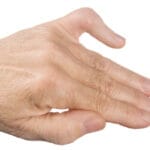How To Use Crutches, Canes, and Walkers
If you sustain a leg or foot injury, undergo knee or lower leg surgery, or experience a stroke, your doctor may suggest using a walking aid during your recovery. Employing crutches, a cane, or a walker can alleviate weight from your injured or weak leg, enhance balance, and facilitate safer engagement in daily tasks.
During your initial attempts at using the walking aid, having a friend or family member nearby for support and stability might be beneficial. Initially, tasks may seem challenging, but with a few pointers and practice, most individuals can swiftly build confidence and adeptly employ a walking aid for safe mobility.
Optimising Crutch Usage
Effective Positioning:
- Ensure that when standing upright, the crutches are positioned about 1-2 inches below your armpits.
- Align the handgrips of the crutches with the top of your hips for proper support and stability.
- Keep a slight bend in your elbows while holding the hand grips to maintain balance and comfort.
- Remember to distribute your body weight onto your hands rather than relying heavily on the underarm supports. This helps prevent potential discomfort and injury to the nerves and blood vessels in the armpits.
Walking Technique:
- Lean forward slightly and place the crutches approximately one foot ahead of you.
- Initiate your step as if using the injured leg, then shift your weight onto the crutches.
- Progress forward gradually between the crutches, completing the step with your unaffected leg.
- Once your good leg is firmly planted, advance the crutches for the next step.
- Maintain a forward gaze rather than looking down at your feet for better balance.
Sitting Procedure:
To sit down:
- Position yourself in front of a sturdy chair.
- Place the injured foot forward and hold both crutches with one hand.
- Use the other hand to locate the chair’s seat behind you.
- Lower yourself into the chair slowly and carefully.
- Once seated, lean the crutches nearby, ensuring they are inverted to prevent tipping.
To stand up:
- Edge forward to the front of the chair.
- Grasp both crutches with the hand on your injured side.
- Push yourself upward, bearing weight on your unaffected leg.
- Rise to a standing position, maintaining balance with your crutches.
Stair Navigation:

- When ascending or descending stairs, utilise handrails for support.
- Tuck the crutches under one arm while gripping the handrail with the opposite hand.
- Lead with your good leg when ascending; hold the injured leg up when descending.
- Ascend or descend one step at a time, taking it slowly and cautiously.
- If there are no handrails, hold the crutches under both arms and proceed carefully with your good leg.
Canes:
- A cane offers support for minor balance issues, weakness, or pain.
- Position the cane so the top reaches the wrist crease when standing upright.
- Maintain a slight elbow bend while holding the cane.
- Carry the cane in the hand opposite the side needing support (e.g., if the right leg is injured, hold the cane in the left hand).
Walking with a Cane:

- Start by placing your cane slightly ahead of you, about one small stride.
- Initiate the step with your injured leg and complete it with your unaffected leg.
Stair Climbing:
To ascend:
- Hold the cane in the hand opposite your injured leg.
- Grip the handrail with your free hand.
- Step up first with your good leg, followed by your injured leg.
To descend:
- Place the cane on the step first.
- Then, place your injured leg on the step.
- Finally, step down with your good leg, which supports your body weight.
Using Walkers:

If you require more assistance with balance and mobility, especially after procedures like total knee or hip replacement:
- Opt for a pickup walker with four legs for maximum stability.
- A walker allows you to distribute weight off your lower body, relying on your arms for support.
- Maintain a straight back posture and slightly bent elbows while holding the walker.
- Regularly check the rubber tips on the walker’s legs for wear and tear, replacing them if necessary for optimal safety and stability.
Walking with a Walker:
- Begin by positioning your walker approximately one step ahead, ensuring all four legs are on stable ground.
- Hold onto the top of the walker with both hands for support.
- Place your injured leg in the central area of the walker without extending it entirely to the front.
- Apply downward pressure on the handgrips of the walker as you elevate your good leg to align with your injured leg.
- Take small, deliberate steps, especially when turning, and maintain a slow pace.
Sitting:
To sit down:
- Retreat until your legs touch the chair.
- Use your hands to locate the seat of the chair behind you.
- Lower yourself gradually into the chair.
To stand up:
- Utilise your arm strength to push yourself upward, gripping the walker’s hand grips.
- Avoid pulling or tilting the walker to assist in standing.
Stairs:
- Never attempt to climb stairs or use an escalator while using your walker.








